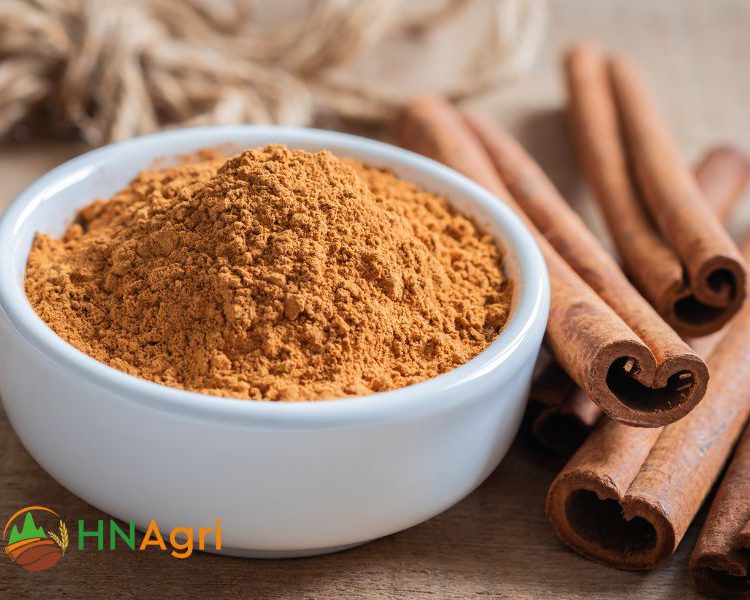Unraveling the Spice: Discovering the Rich History and Flavor of Vietnamese Cinnamon

Vietnamese cinnamon, known locally as Cassia, is a treasured spice that has captivated the palates of culinary enthusiasts and chefs around the world. With its warm, sweet, and slightly pungent flavor, this unique cinnamon stands out among its many varieties, offering a depth and richness that elevate both sweet and savory dishes. Its history is as complex and layered as its taste, tracing back centuries to ancient trade routes and cultural exchanges that brought it from the lush forests of Vietnam to kitchens globally.
As we delve into the fascinating journey of Vietnamese cinnamon, we uncover its origins, the traditional methods of cultivation, and the invaluable role it plays in Vietnamese cuisine. This remarkable spice not only enhances flavors but also reflects the country’s agricultural heritage and the craftsmanship of those who harvest and produce it. Join us as we explore the distinct characteristics that set Vietnamese cinnamon apart and learn how to incorporate this aromatic treasure into your cooking.
Origins of Vietnamese Cinnamon
Vietnamese cinnamon, known as Cassia cinnamon, has deep roots in the rich cultural and agricultural tapestry of Vietnam. It is primarily cultivated in the northern regions of the country, particularly in the provinces of Quang Ninh and Lang Son. The climate and soil composition in these areas provide the ideal environment for the growth of this aromatic spice, which has been harvested by local farmers for centuries. Its unique flavor profile has made it a staple not just in Vietnamese cuisine but also in trade across Asia and beyond.
Historically, Vietnamese cinnamon has been utilized in traditional medicine and cooking. Ancient practices recognized its warming properties and distinctive taste, which were believed to aid digestion and enhance overall health. The spice gained popularity on the spice trade routes, where it was sought after for its quality and intensity compared to other cinnamon varieties. As the demand for Vietnamese cinnamon grew, so did its reputation as an essential ingredient in both local and international dishes.

Throughout the centuries, Vietnamese cinnamon has woven itself into the cultural fabric of the nation. It features prominently in many traditional recipes, particularly in festive dishes and beverages. The spice is also celebrated during harvest festivals, where communities come together to honor the land and labor that produce this rich flavor. As Vietnam continues to share its culinary delights with the world, Vietnamese cinnamon stands out as a symbol of the country's agricultural heritage and innovative spirit.
Culinary Uses and Flavor Profile
Vietnamese cinnamon, known as cassia, is celebrated for its rich and warm flavor, making it a favorite in both sweet and savory dishes. Its boldness can enhance the sweetness of desserts, such as cinnamon rolls, apple pies, and various pastries. When added to baked goods, Vietnamese cinnamon imparts a depth that elevates the overall flavor profile, creating a delightful balance between spicy and sweet.
In savory cooking, Vietnamese cinnamon plays a significant role in many traditional dishes. It is commonly used in curries, stews, and marinades, where its robust flavor pairs beautifully with meats and vegetables. The spice is also a key ingredient in pho, the famous Vietnamese noodle soup, where it contributes warmth and complexity to the broth, enriching the dish and enhancing the overall dining experience.
When it comes to beverages, Vietnamese cinnamon finds its place in both hot and cold drinks. It is often used in chai tea and various coffee preparations, bringing a fragrant warmth that complements the beverage's base flavors. Whether sprinkled on top of a warm latte or simmered in a pot of spiced tea, the aromatic qualities of Vietnamese cinnamon provide an inviting sensory experience for anyone who enjoys a comforting drink.
Health Benefits and Cultural Significance
Vietnamese cinnamon, known for its distinct flavor and aroma, is not only a culinary delight but also offers numerous health benefits. It is rich in antioxidants, which help to combat oxidative stress in the body. vietnamese cinnamon of Vietnamese cinnamon can aid in regulating blood sugar levels, making it a popular spice among those looking to manage their diabetes. Additionally, it has anti-inflammatory properties that can help reduce inflammation in the body, promoting overall health and wellness.
Culturally, Vietnamese cinnamon holds a significant place in traditional practices and cuisine. It is often used in various Vietnamese dishes, adding warmth and depth to flavors. Beyond its culinary uses, this spice is also integrated into traditional medicine, where it is believed to support digestion and enhance circulation. The cultural reverence for this spice is evident in its inclusion in festive foods and family recipes, binding generations through shared culinary experiences.
The appreciation for Vietnamese cinnamon extends beyond health and cuisine. It symbolizes the rich agricultural heritage of Vietnam, embodying the connection between the land and its people. By using locally sourced spices, communities foster sustainability and preserve the traditional methods of cultivation and harvesting. This commitment to quality and tradition enhances the spice's value, making it a cherished ingredient in both local and global kitchens.
